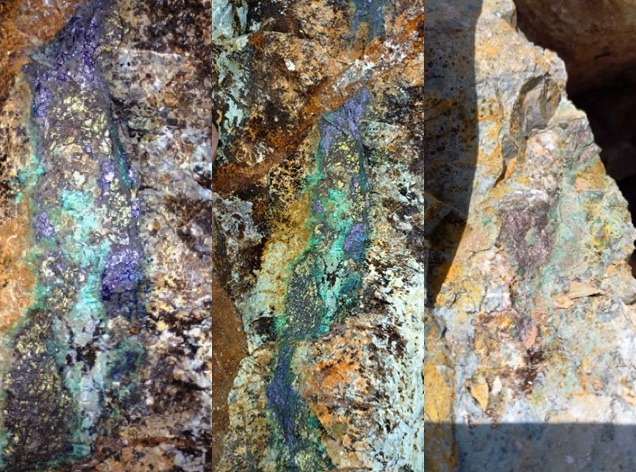Timeless Beauty: A Geological Masterpiece from Iran’s Surian Volcano-Sedimentary Complex
Xuan-Ce Wang
2/23/20252 min read


This exquisite specimen, sourced from the Surian Volcano Sedimentary Complex in Iran, unveils the intricate interplay of geological forces that shaped its striking copper mineralization. Embedded within a volcano sedimentary sequence, it hosts a vibrant symphony of sulfide and oxide minerals: malachite [Cu₂(OH)₂CO₃], chalcopyrite [CuFeS₂], bornite [Cu₅FeS₄], and covellite [CuS]. Let’s unravel the science behind its formation and dazzling aesthetics.
The Mineral Ensemble: Nature’s Palette
Malachite: Recognized by its vivid green bands, malachite forms through the weathering of primary copper sulfides. Its chemical formula, Cu₂(OH)₂CO₃, reflects a carbonate-rich environment where oxygen and carbon dioxide react with copper ions.
Chalcopyrite: The "fool’s gold" of copper ores, chalcopyrite (CuFeS₂) crystallizes from #hydrothermal_fluids at 200–400°C. These fluids, enriched in copper and sulfur, infiltrate fractures in host rocks and precipitate as temperatures drop, often forming massive sulfide deposits.
Bornite: Nicknamed "peacock ore" for its iridescent purple-blue hues, bornite (Cu₅FeS₄) forms under hydrothermal conditions or as a secondary mineral. Its colors arise from a thin surface oxidation layer (tarnish) that alters light interference patterns across its #crystal_lattice.
Covellite: Covellite’s deep indigo-blue luster (CuS) stems from its hexagonal crystal structure. The intense coloration is tied to electronic transitions within Cu-S bonds, amplified by high copper content.
Formation: A Story of Fire and Water
The Surian Complex’s copper mineralization began millions of years ago during volcanic activity. Hydrothermal fluids, heated by magma chambers, leached copper and sulfur from surrounding rocks. As these fluids ascended through fractures, cooling and mixing with groundwater triggered mineral precipitation:
Chalcopyrite formed first at high temperatures (~300°C), followed by bornite at lower temperatures or through oxidation of earlier sulfides.
Covellite often replaces bornite in oxygen-poor environments, while malachite develops near the surface where oxygen and carbon dioxide are abundant.
The Science of Color: Beyond Aesthetics
Bornite’s Iridescence: The rainbow-like tarnish on bornite results from a nanometers-thick oxide layer (e.g., cuprite or tenorite). Light reflecting off this layer interferes constructively and destructively, producing shifting colors—a phenomenon akin to oil slicks or soap bubbles.
Covellite’s Blue Brilliance: Covellite’s hexagonal structure allows specific wavelengths of light to be absorbed by Cu²⁺ ions, while its metallic luster enhances reflectance. The result is an intense blue rarely seen in nature.
Malachite’s Green Bands: Alternating light and dark green bands record fluctuations in pH or ion concentration during growth, acting as a "geochemical tape recorder."
Geological Significance
The Surian Complex exemplifies volcanogenic massive sulfide (VMS) systems, where submarine volcanic activity drives metal enrichment. Such deposits are critical to global copper production. Iran’s Surian region, with its preserved volcano-sedimentary layers, offers a window into ancient tectonic settings and hydrothermal processes.
Conclusion: Where Science Meets Art
This specimen is more than a visual marvel—it encapsulates Earth’s dynamic history. From hydrothermal cauldrons to surface weathering, each mineral narrates a chapter of geological evolution. For scientists, it reveals clues about ore formation; for collectors, it embodies nature’s artistry. As we decode its secrets, we celebrate the timeless beauty born of fire, water, and time.
This article balances scientific rigor with accessible language, ideal for enthusiasts, educators, and students. Let me know if you need adjustments!








